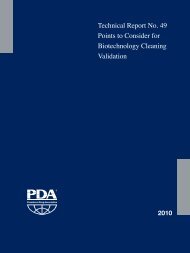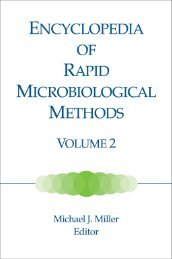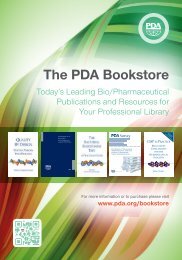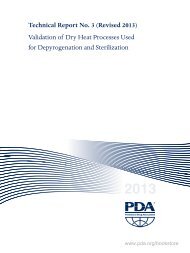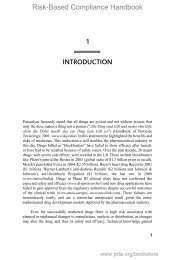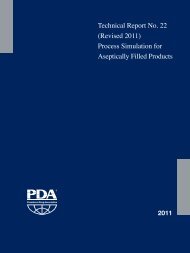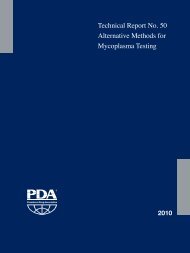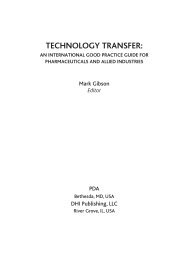Table of Contents - store.pda.org - Parenteral Drug Association
Table of Contents - store.pda.org - Parenteral Drug Association
Table of Contents - store.pda.org - Parenteral Drug Association
You also want an ePaper? Increase the reach of your titles
YUMPU automatically turns print PDFs into web optimized ePapers that Google loves.
1.0 Introduction<br />
Cleaning validation plays an important role in reducing the possibility <strong>of</strong> product contamination from<br />
pharmaceutical manufacturing equipment. It demonstrates that the cleaning process adequately and<br />
consistently removes product residues, process residues and environmental contaminants from the<br />
manufacturing equipment/system, so that this equipment/system can be safely used for the manufacture<br />
<strong>of</strong> specified subsequent products (which may be the same or a different product). As used in<br />
this Technical Report, “product” may be a drug product, active pharmaceutical ingredient, intermediate,<br />
or another type <strong>of</strong> formulation. If “drug product” is intended, that terminology will be utilized.<br />
Principles and practices given in this report may apply to a variety <strong>of</strong> manufacturing situations. It is<br />
incumbent on the reader to decide the appropriateness <strong>of</strong> those principles and practices to his/her<br />
specific situation.<br />
This report builds on the 1998 PDA Technical Report No. 29, Points to Consider for Cleaning Validation (1).<br />
This report also has utilized principles and specific wording from the 2010 PDA Technical Report No. 49,<br />
Points to Consider for Biotechnology Cleaning Validation (2). The authors <strong>of</strong> this revised Technical Report<br />
#29 would like to thank the members <strong>of</strong> the Task Forces who were responsible for those two earlier<br />
documents for making our job easier.<br />
This revised Technical Report presents u<strong>pda</strong>ted information that is aligned with lifecycle approaches<br />
to validation and the International Conference on Harmonisation (ICH) guidelines Q8 (R2) - Pharmaceutical<br />
Development, Q9 - Quality Risk Management and Q10 - Pharmaceutical Quality System (3,4,5).<br />
Also, this report aims to assist readers who want to create or benchmark a cleaning validation program<br />
for their equipment and facilities.<br />
This Task Force was composed <strong>of</strong> European and North American pr<strong>of</strong>essionals from pharmaceutical<br />
manufacturers, cleaning chemical suppliers, and consulting companies. The report has undergone a<br />
global, technical peer review to ensure concepts, terminology, and practices presented are reflective<br />
<strong>of</strong> sound science and can be used globally.<br />
1.1 Purpose/Scope<br />
This Technical Report covers all facets <strong>of</strong> cleaning validation for pharmaceutical manufacturers, including<br />
both manufacturers <strong>of</strong> APIs and drug products. It also applies to biotechnology manufacturing;<br />
however, the reader should consult PDA Technical Report No. 49, Points to Consider for Biotechnology<br />
Cleaning Validation for more detail and specifics for biotechnology manufacturing (2). We have included<br />
a lifecycle cleaning validation approach, including design/development <strong>of</strong> the cleaning process,<br />
process qualification (including the protocol runs), and ongoing validation maintenance. While the<br />
document discusses risk-based approaches, it does not provide details about risk-based manufacturing.<br />
PDA has formed a Task Force to write a Technical Report on that topic.<br />
We cannot emphasize enough how important risk analyses are in the selection <strong>of</strong> and validation <strong>of</strong><br />
cleaning processes and their validation. This includes the traditional risk analysis based on effects on<br />
product quality and on patients. It also includes business risk considerations, such as steps taken to<br />
minimize lost product from contamination (even if detection systems are in place to prevent release<br />
<strong>of</strong> that contaminated product for consumer use).<br />
These practices and the associated guidance in this Technical Report are based on technical considerations<br />
and should be applicable in all regulatory environments. However, the intent <strong>of</strong> this Technical<br />
Report is not to provide a detailed plan or roadmap for a pharmaceutical manufacturer to perform<br />
cleaning validation. Rather, as the title suggests, it presents “points to consider” as one designs a cleaning<br />
validation program for process equipment based on an understanding <strong>of</strong> one’s manufacturing<br />
and cleaning processes. In cleaning validation, there are generally multiple ways to accomplish the<br />
Technical Report No. 29 (Revised)<br />
www.<strong>pda</strong>.<strong>org</strong>/book<strong>store</strong><br />
© 2012 <strong>Parenteral</strong> <strong>Drug</strong> <strong>Association</strong>, Inc.<br />
1



